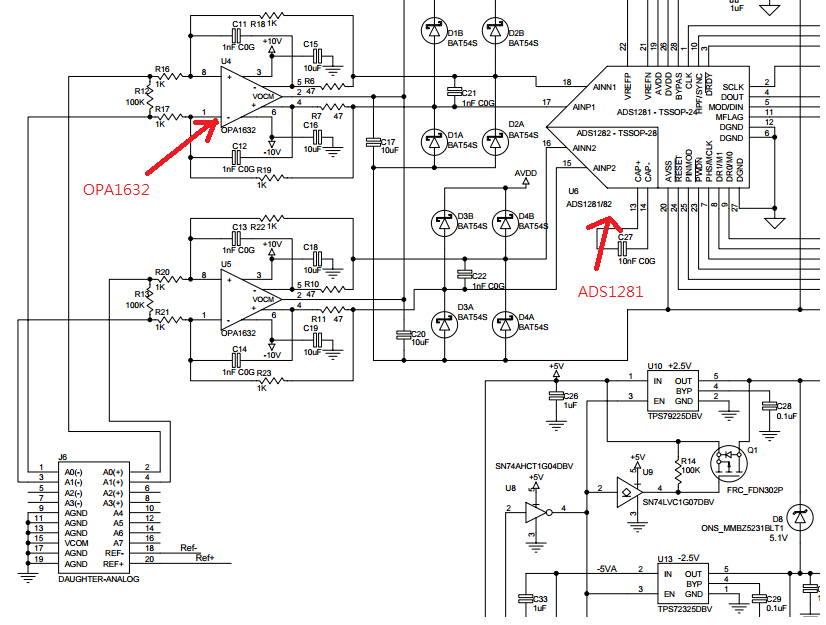Hi,
I'm try to use ADS1281EVM.
And the circuit is shown as following:
The OPA1632 is the preamplifier
My questions are:
1. How is the circuit function of OPA1632? LPF or buffer?
If it is LPF, how to calculate cut-off frequency? Is it has formula?
2. The analog input range of ADS1281 is +2.5V to -2.5V.
But the max. analog output of seismic sensor is +10V to -10V.
Is it possible to modify the circuit of OPA1632 which is shown in the figure to down scale the input range to suitable for ADS1281? (Gain = 0.25)
In most cases usually down scale by resistance voltage divider.
I think it is not suitable for the precision measurement, right?
3. Why the power supply of OPA1632 given by +10V and -10V?
In the data sheet, the supply range is : ±2.5V to ±16V.
Why the circuit do not use AVDD/AVSS(±5V) but extra power(±10V)?
Thanks.
YHH


